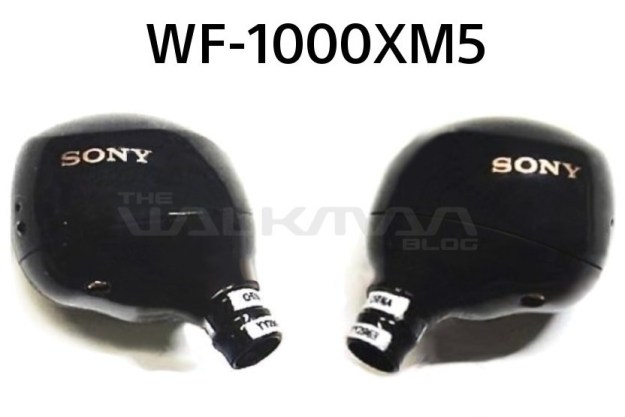“The Pioneer SE-A1000 headphones sound amazing and in some cases seem to bring an entirely new physical dimension to audio.”
- Clean bass; mind-blowing mids and highs; lightweight; feel durable; attractive looking
- Unruly cord length; limited adjustability
Summary
Pioneer has boldly dubbed their recently released SE-A1000 headphones as their top-of-the-line audio headphones. At $199 USD per pair, one would certainly hope and expect that they are truly the best Pioneer headsets ever worn. The SE-A1000s were given a rigorous aural exam covering a wide range of genres — from serene classical to brain-shaking goth. Continue reading to find out how they performed.
Features and Design
Pioneer’s SE-A1000 headphones have a very impressive look. Their mere size alone commands attention and gives a distinct air of professional-level audio. The materials and construction are equally high-tech, aesthetic, and sturdy. While they weigh about 20 ounces (as compared to the 4-oz. Bose TriPort headphones), they are not unusually heavy for their size. The fiber-coated headset cord has a strong, professional feel. The cord length, however, is very unusual at nearly 20 feet. The ear pads are very soft and comfortable. The SE-A1000s have a rubber-coated outer frame that looks somewhat like a roll cage on a 4 x 4. And though the free-adjusting headband will comfortably conform to most head shapes and sizes (especially folks with larger heads or lots of hair), the vertical elevation of the headband cannot be adjusted along the roll-cage frame. This could make the SE-A1000s a little awkward for some users with smaller physical frames.
Inside the ear pads are rare-earth alloyed magnets (50mm driver units) pushing out 102dB/mW. Impedance is 45 ohms at 1kHz, max power is 1500mW, and the frequency range is 10Hz – 30kHz. Why is the 10Hz – 30kHz frequency range significant? Humans hear, on average, between the really low 20Hz frequency and really high 20kHz frequency. There are people who can hear lower and higher frequencies than the average Joe, but they’re few in number. The SE-A1000 headphones have the ability to produce sounds far below and above the level of a human hearing, meaning that nearly any frequency recorded in music or in a film will be present. Failure to detect these frequencies will, therefore, most likely be attributed to the limitations of your concert-and-iPod-assaulted ears.
Setup and Use
Setting up the Pioneer SE-A1000 headphones is quite easy, though you’ll need a box cutter or very sharp scissors to open the thick, armor-like plastic enclosure. Be VERY careful when opening the enclosure so as to prevent physical injury. That thick plastic can be as sharp as a knife.
Once the package is open, unwind enough cord to hook into your audio source. The extra long cord may prove unwieldy for close-proximity use, but for folks who will use the SE-A1000 headset with a home theater system across a room, the cord length is just right. Depending on whether your components use a 1/8″ or 1/4″ audio jack, the SE-A1000 headset will adjust accordingly thanks to the 1/4″ adapter provided. Pioneer also included a nice, felty-soft draw-string carrying bag for the SE-A1000s.
Adjust the headset on your head. Everyone’s noggin is sized and shaped differently, so each experience will vary. For me, the headphones naturally settle about 1/4″ too low, pressing the tops of my ears against my head. I have to wiggle and coax the headset into just the right position to prevent an awkward feel. Once they’re properly situated and media is playing, my attention goes 100% to the excellent sounds produced.
As any true audiophile will tell you, sound quality and aural pleasure are distinctly subjective. What may sound beautiful to one person may be unimpressive or unbearable to another. Some people like to hear music, while others prefer to feel it coursing and vibrating through the very core of their body and soul. Anyone offering opinions as to sound quality will inevitably satisfy and aggravate an equal number of people. So with that caveat made, I’ll tell you what I found while listening to the SE-A1000 headphones.
Sources used for testing:
• Apple iPod 5G 30GB (AAC, MP3)
• MacBook Pro (DVD, CD, AAC, MP3, Lossless)
• Denon AVR987 receiver with Denon DVD757 player (DVD, CD)
Music tested:
• Bjork Homogenic (AAC)
• Tori Amos Tales of a Librarian (CD, AAC & MP3)
• INXS Welcome To Wherever You Are (AAC & Lossless)
• Mozart Requiem (AAC)
• This Ascension Sever (MP3)
• Switchblade Symphony Wicked (MP3)
• Akvarium Zoom Zoom Zoom (CD & AAC)
Movies tested:
• Ray (DVD)
• Chronicles of Narnia (DVD)
• Batman Begins (DVD)
I tested the SE-A1000’s using a wide range of media as listed above, both before and after a 60 hour burn-in. With each of the songs and movies I listened to (over and over), I found that I was hearing new notes that I’d never heard or noticed before. These surprise notes were mostly in the mid and high ranges, especially in the early tests. After 24 hours of constant play, the drivers began to develop more bass range. After 70 hours of alternating play and rest, the lowest frequencies really began to individualize. In my own experience, I found that the SE-A1000’s rendered bass in a new way for me. Lower frequencies seemed to feel wider and and have more physical dimension. At the same time, the mids and highs seemed to open up a bit, becoming clearer and easier to distinguish.
One thing I noticed with the SE-A1000 headphones is that the bass never overpowers or obfuscates the mids and highs, and vice versa. None of the frequencies along the wide 10Hz-30kHz spectrum seemed to interfere with each other like they do on so many consumer-grade
In certain audio recordings, like Akvarium’s Mertvie Matrosi ne Spyat and Bjork’s Jóga and most especially in DVDs like Batman Begins, the SE-A1000s produces a feeling of being directly in the center of the soundstage. Listening to Akvarium, it felt like I was standing at arms length from Boris Grebenshchikov’s microphone. Flute, guitar and drums seemed to wrap widely around me. Bjork’s music gave a slightly different impression. While listening to Jóga, I felt as though the music was much closer to me. Even though I was able to distinctly identify individual instruments, voices and effects dropping away in the distance, the soundstage still felt tight. Classical music like Mozart’s Requiem sounded clean and powerful, but it had a rather two-dimensional quality to it, like the vocalists and instruments were somehow arranged single file. It could very well be a matter of the original recording and not the SE-A1000s.
While playing Batman Begins, I discovered how diverse the soundstage could feel. During moments of dialogue, the audio felt close up, like I was being spoken to directly, albeit loudly. I could still hear things way in the background, like bodies in motion, sounds of automobiles, etc. Moments later, when action sequences picked up, the soundstage seemed to widen dramatically. While I still felt like I was dead center in the action, things like explosions and shattering glass would make 360-degree trips around the stage, forcing my attention to shoot outward. The SE-A1000’s wide frequency range made it seem possible to pinpoint individual shards of glass as they hit the ground around me while still feeling the low percussion of a dying explosion.
Of course, these results change slightly depending on what audio source is being used and whether different EQ presets are chosen. The Denon AVR987 receiver produced the best results with and without audio presets. At roughly $950 USD for the receiver alone, one would clearly expect near-perfect results. But the SE-A1000’s sounded awesome even when used on a MacBook Pro and a 5G iPod. It’s important to note that the SE-A1000s drain an iPod’s battery rather quickly. No surprises there – the SE-A1000s are much larger and way more powerful than Apple’s stock earbuds.
As one can imagine, hearing new notes in familiar audio is always a pleasant surprise. It gives one a new opportunity to rediscover his or her favorite music and movies. Based on this reviewer’s experiences, the SE-A1000’s seem to turn music into a sensuous experience.
Image Courtesy of Pioneer
Conclusion
The Pioneer SE-A1000 headphones sound amazing and in some cases seem to bring an entirely new physical dimension to audio. If you’re a music lover and you want to rediscover just how amazing your music collection is, give the SE-A1000s a try.
If you’re sensitive to in-ear headphones (ear buds) and you want a large, very comfy set of
The SE-A1000 headphones do have competition, however, even within the Pioneer family. The HDJ-1000 pro DJ
Although the SE-A1000s $199 USD initial retail price tag may make some buyers uneasy, remember the saying, “You get what you pay for.”
Pros:
• Clean bass, mind-blowing mids and highs
• Lightweight
• Very tight construction
Cons:
• Unruly cord length
• Limited adjustability
Editors' Recommendations
- Sony WH-1000XM6: the design and features we want Sony’s next headphones to deliver
- Pioneer’s latest budget-friendly Dolby Atmos AV receivers start at $379
- Best Buy expands its affordable Xumo TV lineup with Pioneer-branded models
- Sony updates WH-1000XM5 with head-tracked spatial audio and better multipoint
- LG’s 2023 SC9 and SE6 soundbars are now available








